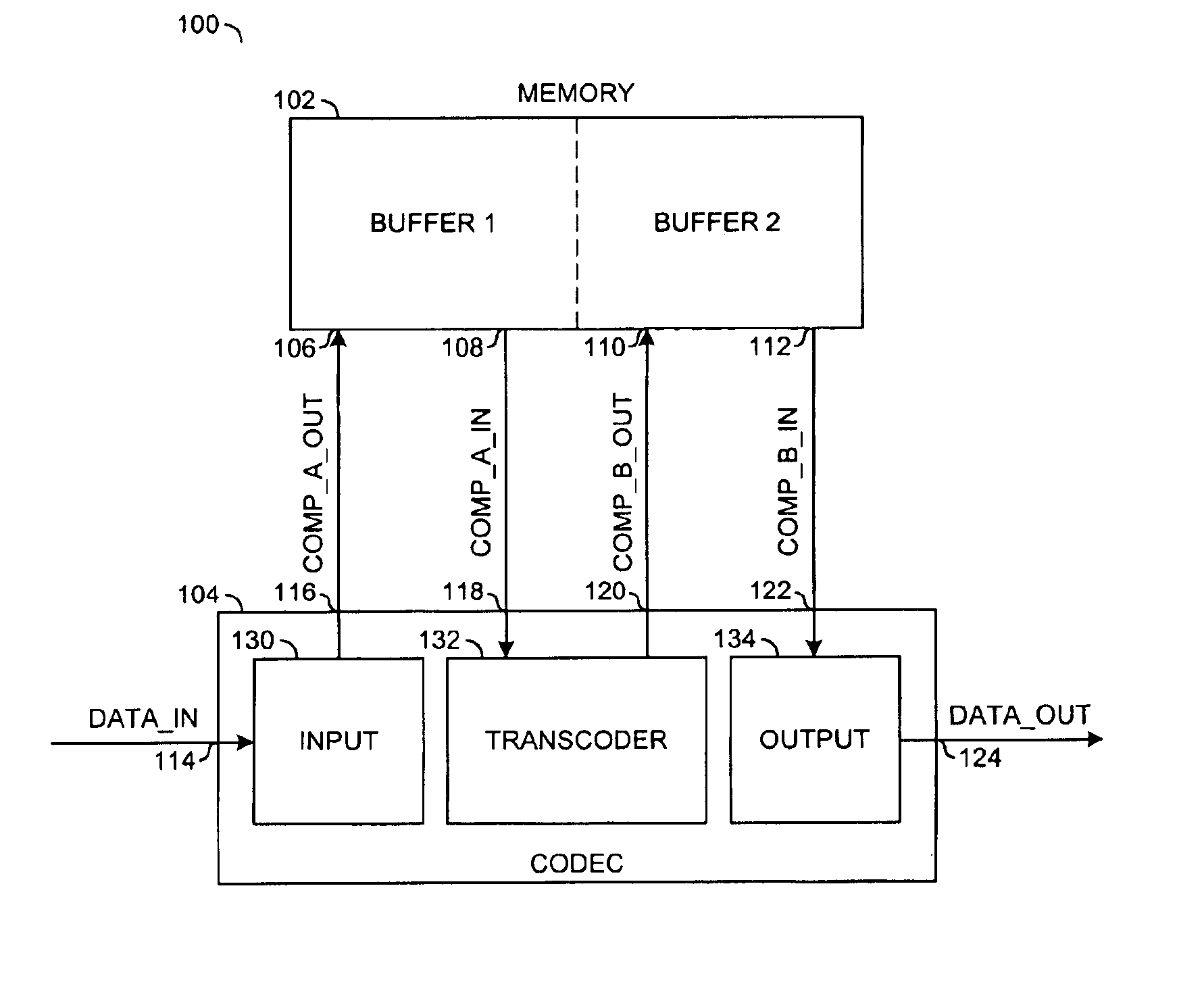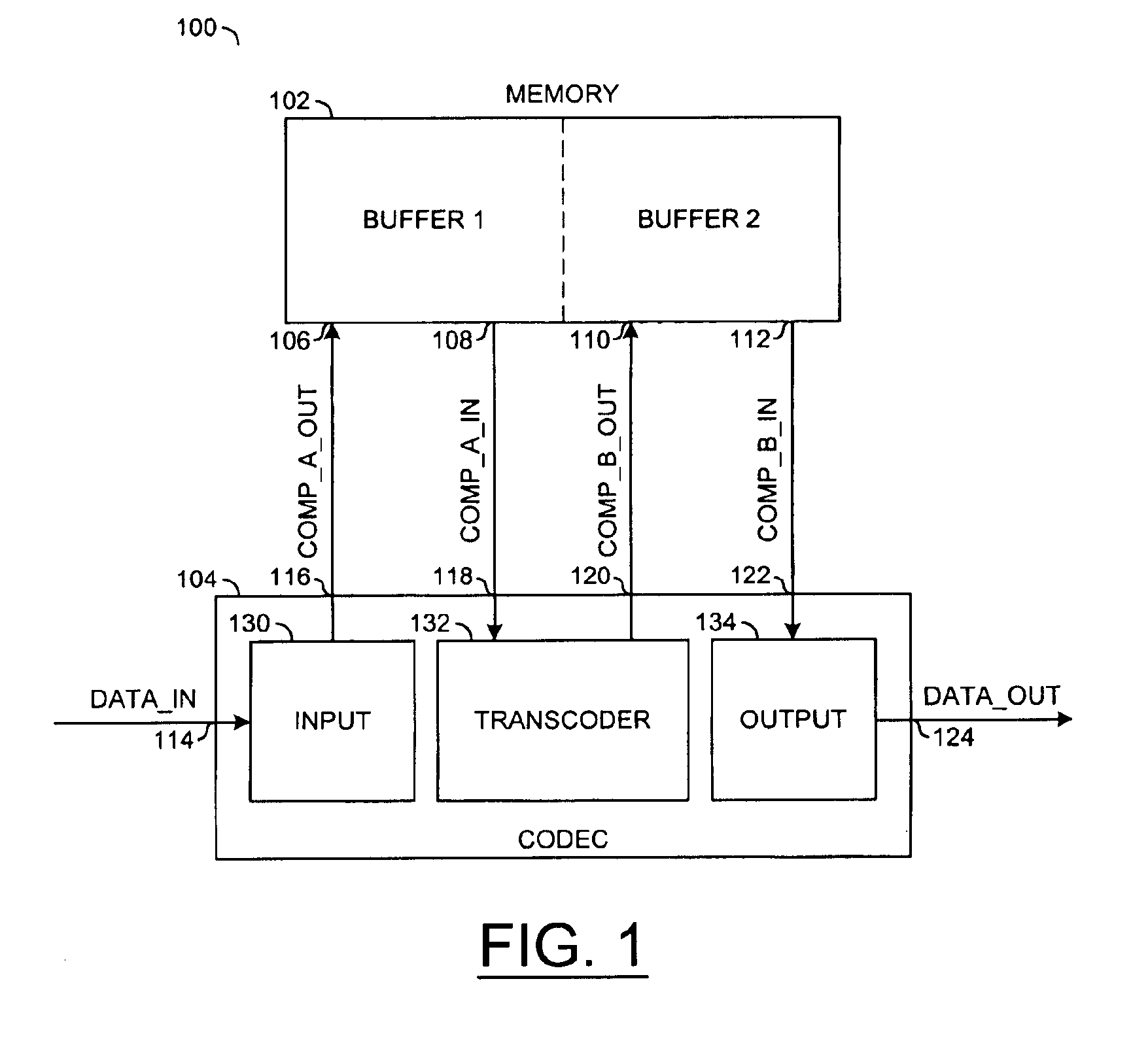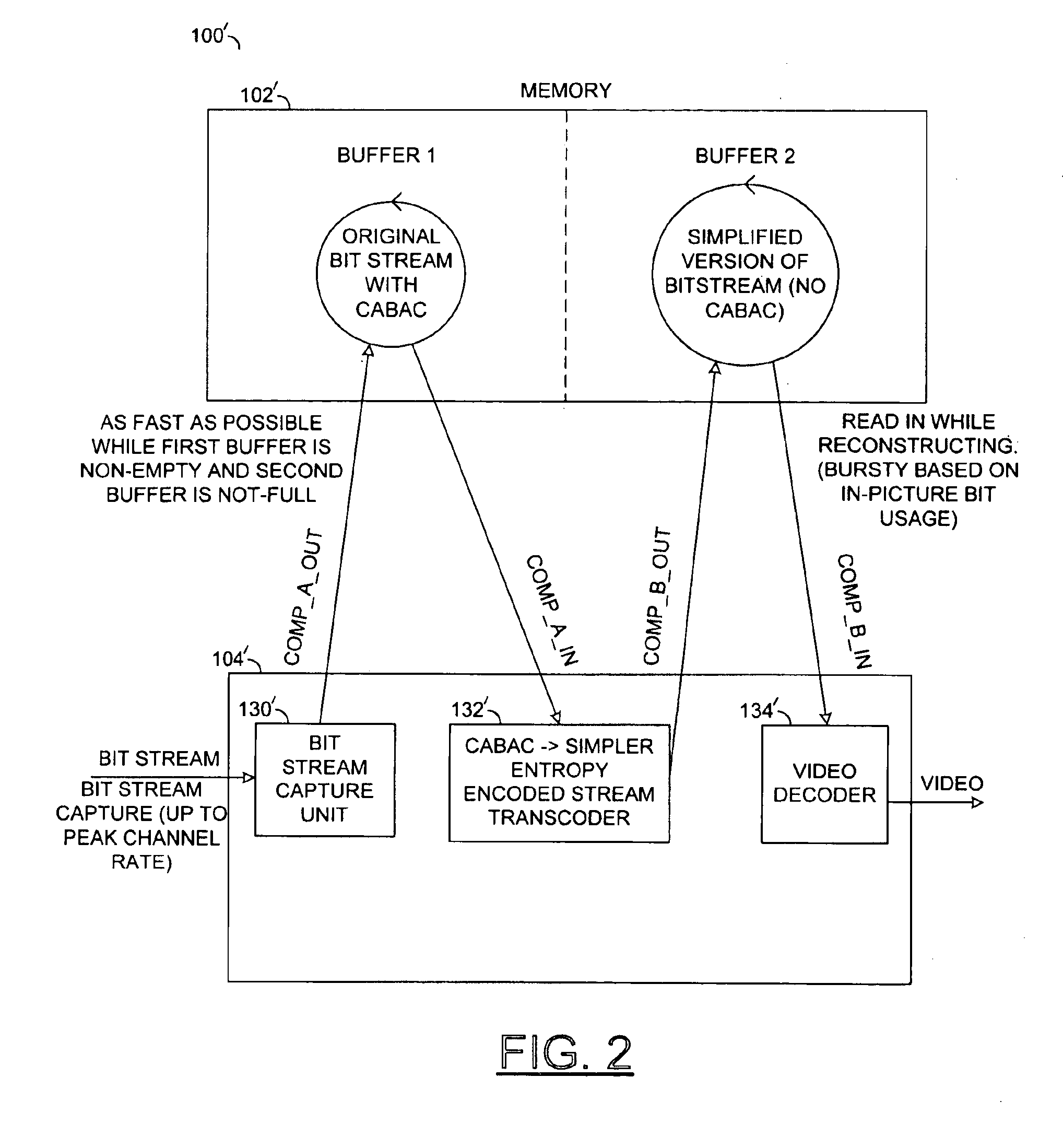Context based adaptive binary arithmetic CODEC architecture for high quality video compression and decompression
a binary arithmetic codec and encoder/decoder technology, applied in the field of digital video compression, can solve the problems of complex, computationally intensive processes, uneven bit rate of compressed data,
- Summary
- Abstract
- Description
- Claims
- Application Information
AI Technical Summary
Benefits of technology
Problems solved by technology
Method used
Image
Examples
Embodiment Construction
[0015]Referring to FIG. 1, a block diagram of a circuit 100 is shown illustrating a preferred embodiment of the present invention. The circuit 100 generally provides an encoder / decoder architecture for high quality video compression and decompression that may be configured to use context-based adaptive binary arithmetic coding (CABAC). The circuit 100 generally receives an input signal (e.g., DATA_IN) and generates an output signal (e.g., DATA_OUT). When the circuit 100 is implemented as an encoder circuit, the signal DATA_IN may comprise uncompressed data (e.g., video, audio, etc.) to be compressed and the signal DATA_OUT may comprise a compressed data (or bit) stream (e.g., for transmission or storage). When the circuit 100 is implemented as a decoder circuit, the signal DATA_IN may comprise a compressed data (or bit) stream (e.g., MPEG-4, H.264, etc. compressed video) and the signal DATA_OUT may comprise an uncompressed data stream (e.g., video, audio, data, etc.).
[0016]The circu...
PUM
 Login to View More
Login to View More Abstract
Description
Claims
Application Information
 Login to View More
Login to View More - R&D
- Intellectual Property
- Life Sciences
- Materials
- Tech Scout
- Unparalleled Data Quality
- Higher Quality Content
- 60% Fewer Hallucinations
Browse by: Latest US Patents, China's latest patents, Technical Efficacy Thesaurus, Application Domain, Technology Topic, Popular Technical Reports.
© 2025 PatSnap. All rights reserved.Legal|Privacy policy|Modern Slavery Act Transparency Statement|Sitemap|About US| Contact US: help@patsnap.com



